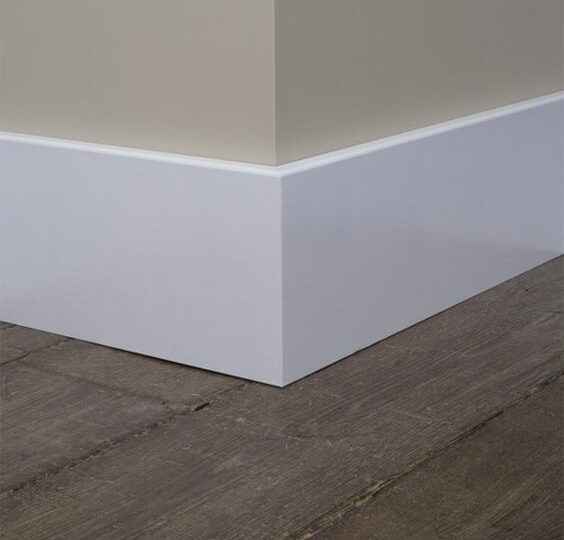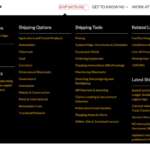Are you looking for a skirting board that is affordable, durable, and easy to paint? Look no further than MDF skirting board. MDF, or medium-density fiberboard, is an engineered wood product that has gained popularity in recent years. Not only does MDF skirting board offer a sleek and modern look, but it is also a more budget-friendly option compared to solid wood. In this blog post, we will discuss everything you need to know about MDF skirting board, from its advantages to installation tips.
Advantages of MDF Skirting Board
MDF skirting board is made from compressed fibers and resin, making it a highly durable option. It is resistant to warping, cracking, and splitting, which can be common issues with solid wood skirting board. Additionally, MDF skirting board is an excellent option for those who want to save money without sacrificing quality. It is cheaper than solid wood skirting board, yet it still provides a modern and stylish finish.
MDF skirting board is also easy to paint, as the surface is smooth and even. Unlike solid wood, MDF does not have any natural variations in grain or color, creating a uniform appearance. Plus, since MDF does not have pores like wood, it absorbs paint much better, resulting in a smoother finish and better coverage.
Types of MDF Skirting Board
MDF skirting board comes in a variety of styles and sizes to suit any home decor. Some popular profiles include ogee, torus, and bullnose. The thickness of MDF skirting board can range from 12mm to 25mm, depending on the desired look and durability. Additionally, MDF skirting board can come with a variety of finishes, such as primed, white, or oak veneer, giving you more customization options.
Installation Tips for MDF Skirting Board
Despite it is not too difficult to put up, MDF skirting board installation does need a little planning and accuracy. First, estimate the wall’s length and cut the bannister to the appropriate length. After that, fasten the skirting board to the exterior wall with bind and brad pins. Remember to use a spirit level to ensure that the skirting board is level and straight.
When installing MDF skirting board, it is important to leave a small gap between the skirting board and the flooring. This gap allows for expansion and contraction of the skirting board due to changes in temperature and humidity. You can also use caulk to fill in any gaps between the skirting board and the wall.
Maintenance of MDF Skirting Board
MDF skirting board requires minimal maintenance, but it is important to keep it clean and dry. Water-based detergents should be avoided since they might trigger the MDF to expand and distort. To get rid any dust and grime music, use a dry cloth or a cleaner with a bristle attachment. If the skirting board becomes stained, you can use a gentle cleaner specifically designed for MDF.
Choosing the perfect skirting board can be a daunting task. It can either complete or ruin the look of your interior design. MDF skirting board is one of the most popular options today. It’s a versatile and cost-effective choice that can add definition, elegance, and protection to your walls. In this blog post, we’ll explore the benefits, styles, and installation tips of MDF skirting board.
Benefits of MDF Skirting Board
MDF (medium-density fiberboard) is an engineered wood product made from compressed wood fibers and resin. It has several advantages that make it an excellent material for skirting boards.
Firstly, MDF skirting boards are more affordable than hardwood or stone. They cost just a little of the price and have similar looks and endurance.
Second, MDF is a consistent, then stable material that is not affected by variations in moisture, humidity, or cold. Compared to real wood, this implies that there will be a reduced likelihood of warping, breaking down, or splitting.
Thirdly, MDF doesn’t have knots, grains, or imperfections like natural wood, which means that it offers a smooth and even surface for painting or staining. You can achieve a high-quality finish with MDF without spending hours sanding, filling, or priming.
Styles of MDF Skirting Board
MDF skirting boards come in various styles, sizes, and profiles that can match any interior design theme. Here are some of the most popular styles:
Ogee – features an S-shaped curve that adds a traditional and elegant touch to any room.
Chamfer – has a 45-degree angle that creates a clean and simple profile that suits modern and minimalist interiors.
Torus – has a semi-circular shape that offers a soft and rounded edge that suits period and heritage homes.
Bullnose – has a curved profile that eliminates sharp corners and adds a friendly and welcoming feel to any space.
Installation Tips for MDF Skirting Board
Installing MDF skirting boards is a relatively easy and straightforward task that doesn’t require specialized tools or skills. Here are some tips to help you achieve a professional finish:
Measure your walls and calculate the total length of skirting board needed.
Cut the MDF skirting board to the right lengths and angles using a saw or a mitre box.
To have an easy and even surface, sandpaper your skirting board’s corners and edges.
Make sure that the skirting board is level and flush by adding glue to its back and pressing it securely against the frame of the wall.
Nail the skirting board to the wall using panel pins or finishing nails, making sure that you don’t penetrate any pipes or wires.
Fill any gaps or holes with wood filler and sand them again to create a seamless finish.
Conclusion:
MDF skirting board offers several benefits, including durability, affordability, and ease of painting. It comes in a variety of styles and sizes to suit any home decor and can be customized with different finishes. Installing MDF skirting board requires some precision, but it is a relatively simple process. Remember to leave a small gap between the skirting board and the flooring, and avoid using water-based cleaners. Overall, MDF skirting board is a stylish and practical option that can enhance the look and value of any home.
A efficient, fashionable, and useful preference, MDF skirting boards could enhance the overall look and feel of every room. It doesn’t require regular upkeep or repairs, and it’s inexpensive to install, paint, or stain. A MDF skirting panel can be tailored according to your desired interior style, which may be eclectic, modern, or traditional. Consequently, contemplate using MDF skirting board for your next restoration job if you’re searching for an inexpensive and trustworthy way to safeguard your walls and give your house a bit more personality.








